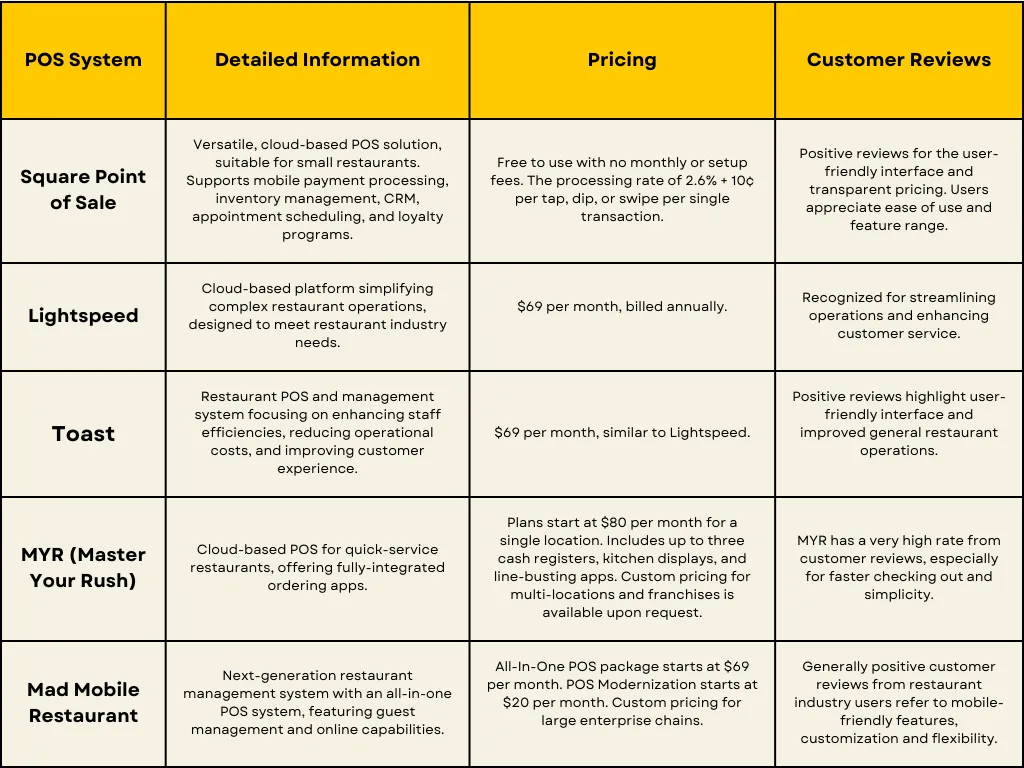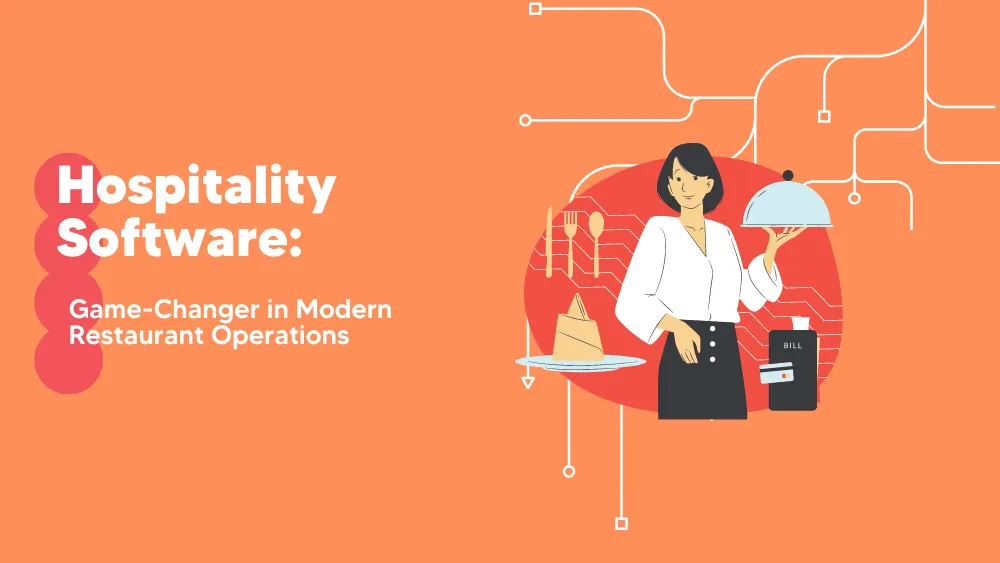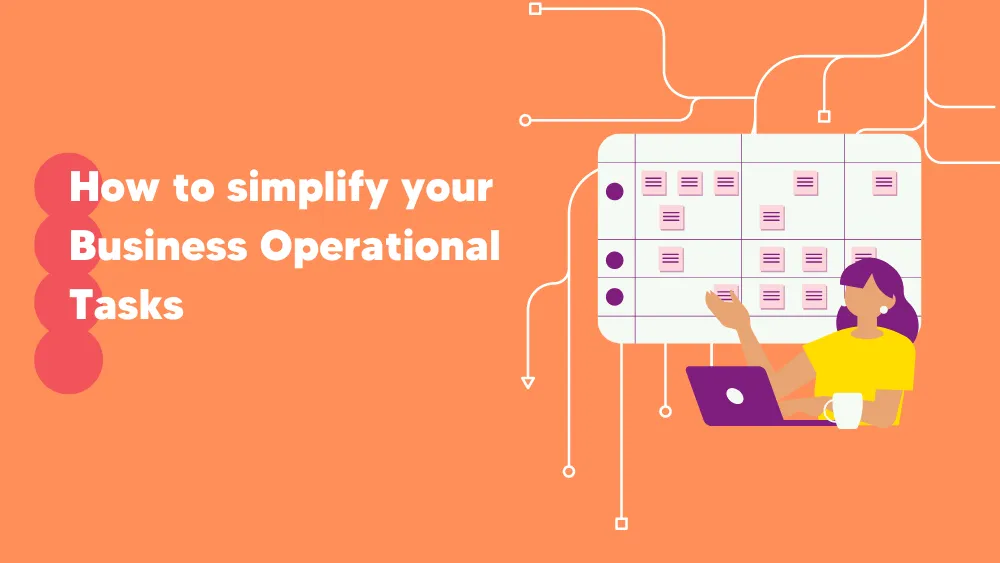Table of Contents
In the hustle and bustle of the restaurant world, where every dollar counts, small restaurant owners, savvy managers, and passionate entrepreneurs know that keeping things smooth and making diners smile is the name of the game. One vital tool that can make a significant difference in achieving these objectives is a Point of Sale (POS) system. The key to success lies in choosing the best POS system for your small restaurant.
This article will serve as your comprehensive guide, helping you navigate the complex landscape of restaurant point-of-sale software and offering insights into critical features such as Restaurant Inventory Management, Tableside Ordering Systems, and POS System Integration. We’ll empower you to make an informed decision, ensuring that your investment not only serves your restaurant but also propels it toward greater heights of success.
The modern restaurant POS system is the beating heart of your establishment, driving transactions, managing inventory, and improving customer experiences while seamlessly integrating with your daily operations.
In this article, we’ll guide small restaurant owners, managers, and entrepreneurs in selecting the perfect POS system by exploring essential features and functionalities, understanding the importance of inventory management, unlocking the benefits of tableside ordering systems, and harnessing the power of system integration. You’ll be well-prepared to choose a POS system that boosts efficiency and fuels your restaurant’s growth and success.
Let’s dive in and discover the transformative potential of the right POS system now!
Understanding the Importance of a POS System
POS in Modern Restaurants
One of the most significant developments that has effectively reshaped how restaurants operate is the advent of point-of-sale (POS) systems. These have become indispensable for big and small modern restaurants, revolutionizing their function. When it comes to small restaurants, having a POS system is crucial. Gone are the days when a cash register was enough to record sales and manage orders. Nowadays, a restaurant’s success depends on its ability to provide seamless service, optimize operations, and enhance the dining experience for its customers.
Benefits of Using a POS System for Small Restaurants
Small restaurants can significantly benefit from adopting a Point of Sale (POS) system. These advanced systems are more than just modern cash registers. They are versatile tools that can significantly impact the efficiency and profitability of your restaurant. A POS can help you streamline operations, manage inventory more effectively, and provide a better customer experience by speeding up the payment process. These benefits can increase revenue and customer satisfaction, making a POS system a wise investment for any small restaurant looking to grow and succeed in today’s competitive market.
- Efficient Order Management – With a POS system, orders can be processed quickly and accurately. This minimizes errors and ensures that customers receive their food promptly.
- Inventory Control – Inventory management is a critical aspect of running a restaurant. A POS system helps small eateries keep track of their stock in real-time, reducing waste and ensuring that popular items are always in stock.
- Enhanced Customer Experience – Tableside ordering and payment options provided by POS systems improve the overall dining experience for customers. It reduces waiting times, allows for customization, and provides a convenient way to pay the bill.
- Sales Analysis – A POS system can generate detailed sales reports and analyze customer data, helping small restaurants make informed decisions about their menu, pricing, and marketing strategies.
- Easy Integration – These systems can be easily integrated with other restaurant software and hardware, such as accounting systems, kitchen display systems, and online ordering platforms, streamlining daily operations and saving time.
- Data Security – These tools are equipped with data security measures to protect customer information and transactions, ensuring the safety and trust of your patrons.
Key Features to Look for in a Restaurant POS System
User-Friendly Interface
When selecting a restaurant POS system, one of the key features to consider is undoubtedly a user-friendly interface. Your restaurant staff, from servers to kitchen staff, will interact with the POS system daily; therefore, choosing a system that is intuitive and easy to learn is vital. A user-friendly interface ensures your team can quickly take orders, process payments, and navigate the system without unnecessary delays or errors. This feature is essential during busy dining hours when efficiency is paramount.
Inventory Management Capabilities
Efficient inventory management is at the core of a successful restaurant operation. Look for a POS system that offers robust inventory management capabilities. It should allow you to track stock levels in real time, receive alerts for low inventory, and even automate reordering processes. An excellent POS system should also support ingredient-level inventory tracking, helping you minimize waste, control costs, and ensure that your menu items are consistently available.
Mobile POS Options for Flexibility
In today’s dynamic restaurant environment, flexibility is vital. Consider a POS system that offers mobile capabilities. Mobile POS options empower your staff to take orders and process payments tableside, increasing efficiency and improving the overall dining experience for your customers. Additionally, mobile POS can be especially beneficial for managing outdoor seating areas or events outside your restaurant’s physical location, giving you the flexibility to adapt to different scenarios and cater to a broader range of customers.
Integration with Online Ordering Platforms
With the rising popularity of online ordering and delivery services, your restaurant POS system must integrate seamlessly with these platforms. Integration with online ordering services ensures efficient order rate tracking, management, and streamlined delivery coordination. Additionally, this feature can provide valuable insights into online sales, customer preferences, and order patterns, allowing you to make informed decisions regarding your digital presence and marketing strategies.
So, carefully consider these key features when choosing a restaurant POS system. By prioritizing them, you can select a POS system that not only meets your current needs but also sets the stage for the growth and success of your small restaurant.Examples of POS Systems for Small Restaurants
We now know that choosing the right POS system for your small restaurant is a critical decision that can significantly impact your daily operations and customer experience. To help you make an informed choice, we’ve reviewed and compared five leading POS systems tailored for small restaurants. Below, you’ll find a practical overview of each system, including detailed information, pricing, features, and what customers say about them:
Square Point of Sale
Square Point of Sale is a versatile, cloud-based POS solution for small restaurants. It can be used with Square’s hardware or on iOS and Android devices. It offers features like mobile payment processing, inventory management, and customer relationship management (CRM). Square Point of Sale also supports appointment scheduling and loyalty programs, making it a comprehensive choice for small businesses. As for the pricing, Square is known to be free to use with no monthly or setup fees. The only cost is the 2.6% + 10¢ processing rate per tap, dip, or swipe, based on each transaction. Square Point of Sale has received positive reviews for its user-friendly interface and transparent pricing. Many users appreciate its ease of use and the range of features it provides.
Lightspeed
Lightspeed is a cloud-based platform that simplifies complex restaurant operations and helps owners scale and grow their businesses. While the source does not provide detailed features, Lightspeed is known for offering a comprehensive solution that caters to the unique needs of the restaurant industry. The platform is priced at just $69 per month, billed annually. Customers have recognized Lightspeed for its capabilities in streamlining operations and improving customer service.
Toast
Toast is a restaurant point of sale (POS) and management system that aims to improve staff efficiencies, reduce operational costs, and enhance customer experience. It caters to restaurants priced at $69 per month, like Lightspeed. Toast is known for its user-friendly interface, which positively impacts restaurant operations. Customer reviews generally highlight this aspect and appreciate the improved experience.
MYR (Master Your Rush)
MYR is a cloud-based POS designed for quick-service restaurants. It offers fully integrated ordering apps for takeout and delivery, aiming to improve customer convenience. However, specific feature details are not provided in the source. MYR offers a competitive pricing structure, with plans starting at just $80 monthly for a single location. This package includes up to three cash registers, kitchen displays, and line-busting apps. If you have multiple locations or run a franchise, personalized pricing can be obtained by requesting a quote. Customer reviews generally give MYR a high rate, primarily due to faster checking out and simplicity of use.
Mad Mobile Restaurant
Mad Mobile offers a next-generation restaurant management system with an all-in-one POS system. Features include guest management and online capabilities, but detailed feature information is not provided. Regarding pricing, you can get started with their All-In-One POS package for just $69 per month, and if you’re interested in POS Modernization, it begins at an affordable rate of $20 per month. Large enterprise chains can also enjoy customized pricing options tailored to their needs. Customer reviews for Mad Mobile Restaurant are very positive, offering perspectives from users in the restaurant industry regarding its mobile-friendly flexibility and effective customization.
It’s important to note that the information provided here is just a general overview of each POS system. Specific pricing, detailed features, and customer reviews may vary and change over time. To make an informed decision, you’ll need to visit the official websites of these POS system providers. Contact their sales or support teams for up-to-date information and consider your restaurant needs and budget. Furthermore, reading specific customer reviews and seeking recommendations from other restaurant owners can provide valuable insights into the real-world experiences of using these systems.

Choosing the Right POS System for Your Restaurant
As said, your chosen system can significantly impact your operations, customer experience, and overall success. So, to make the best possible choice, you must always consider these essential factors: budget, business size, and specific needs. Additionally, we’ll provide a summarizing comparison table to help you evaluate the featured POS systems.
-
Budget
The budget is often the most critical factor for small restaurant owners. POS system costs can vary widely, so it’s crucial to establish a budget that accounts for both the initial setup and ongoing expenses. Consider not only the upfront software and hardware costs but also any subscription fees, transaction fees, and support costs. Remember that a more expensive system may offer additional features and scalability.
-
Business Size
The size of your restaurant plays a significant role in choosing the right POS system. Consider the number of terminals you need and the scalability of the system. A small, single-location restaurant may have different requirements than a multi-location or franchise operation. Ensure the POS system can accommodate your current needs and scale your business’s growth.
-
Specific Needs
Every restaurant is unique, and your POS system should cater to your needs. Determine the features and functionalities that are crucial for your restaurant’s operations. Consider factors such as order management, inventory control, mobile POS capabilities, integration with online platforms, tableside ordering, and customer relationship management (CRM). Tailor your choice to meet your restaurant’s unique requirements.
Conclusion
In this article, we have discussed the significance of a POS system and how considering crucial factors such as budget, business size, and specific requirements can help you make an informed decision that aligns with your unique needs. Specifically, we have explored the importance of a POS system in modern-day restaurants and how it benefits small eateries. We have also highlighted some key features that a restaurant POS system should have, including a user-friendly interface, inventory management capabilities, mobile POS options, and integration with online ordering platforms.
Furthermore, we’ve compared some of the best POS systems for small restaurants, offering insights into their pricing, features, and potential customer reviews. Whether you opt for Square Point of Sale, Lightspeed, Toast, MYR (Master Your Rush), Mad Mobile Restaurant, or others, it’s essential to consider your specific needs, budget, and feedback from users in the restaurant industry to make the right choice.
In the end, the right POS system can be the central nervous system of your restaurant, orchestrating transactions, managing inventory, enhancing customer experiences, and seamlessly integrating with various aspects of your daily operations. By selecting an efficient and affordable POS system, you’re not only streamlining your operations but also contributing to the growth and success of your small restaurant. So, take the time to choose wisely and transform your restaurant operations with the perfect POS system.





